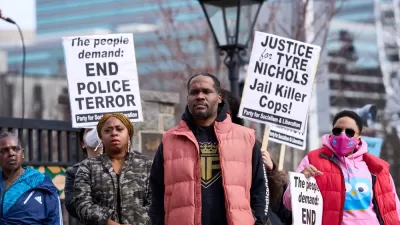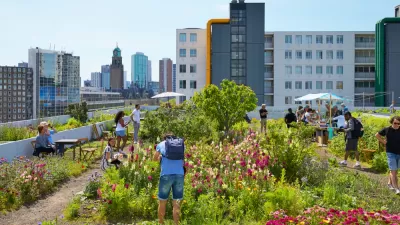Adam Davies writes about the results of an experimental policing project in the Netherlands that seems to demonstrate that improvements to the pedestrian environment have reduced crime in Rotterdam.
The theory of improving the appearance of the urban environment in an effort to improve public safety and reduce crime, known as the "broken windows theory", has been vigorously debated since its appearance in a 1982 article by social scientists James Q. Wilson and George L. Kelling. According to Davies, the results of a recent policing experiment in Rotterdam may provide "some much needed proof for this theory."
The project, called ‘The Neighbourhood takes Charge', focused on addressing quality of life improvements identified by local residents, of which the top three concerns were street cleaning, dog mess, and reducing traffic speeds.
According to Davies, "police started focusing on making streets cleaner, removing graffiti, speed gunning motorists, increasing police visibility and improving the public realm. But rather than neglecting serious crimes, they actually saw some dramatic reductions in all sorts of crime over a two year period, including: drug crime dropped by 30%; burglary dropped by 22%; vandalism dropped by 31%; traffic offences dropped by 19%; theft dropped by 11%; violence dropped by 8%."
It's unclear from Davies' article how much of the reduction in crime can be attributed to the individual efforts he mentions, such as merely increasing police visibility.
FULL STORY: Improving Street Walkability Reduces Crime

Maui's Vacation Rental Debate Turns Ugly
Verbal attacks, misinformation campaigns and fistfights plague a high-stakes debate to convert thousands of vacation rentals into long-term housing.

Planetizen Federal Action Tracker
A weekly monitor of how Trump’s orders and actions are impacting planners and planning in America.

In Urban Planning, AI Prompting Could be the New Design Thinking
Creativity has long been key to great urban design. What if we see AI as our new creative partner?

King County Supportive Housing Program Offers Hope for Unhoused Residents
The county is taking a ‘Housing First’ approach that prioritizes getting people into housing, then offering wraparound supportive services.

Researchers Use AI to Get Clearer Picture of US Housing
Analysts are using artificial intelligence to supercharge their research by allowing them to comb through data faster. Though these AI tools can be error prone, they save time and housing researchers are optimistic about the future.

Making Shared Micromobility More Inclusive
Cities and shared mobility system operators can do more to include people with disabilities in planning and operations, per a new report.
Urban Design for Planners 1: Software Tools
This six-course series explores essential urban design concepts using open source software and equips planners with the tools they need to participate fully in the urban design process.
Planning for Universal Design
Learn the tools for implementing Universal Design in planning regulations.
planning NEXT
Appalachian Highlands Housing Partners
Mpact (founded as Rail~Volution)
City of Camden Redevelopment Agency
City of Astoria
City of Portland
City of Laramie





























